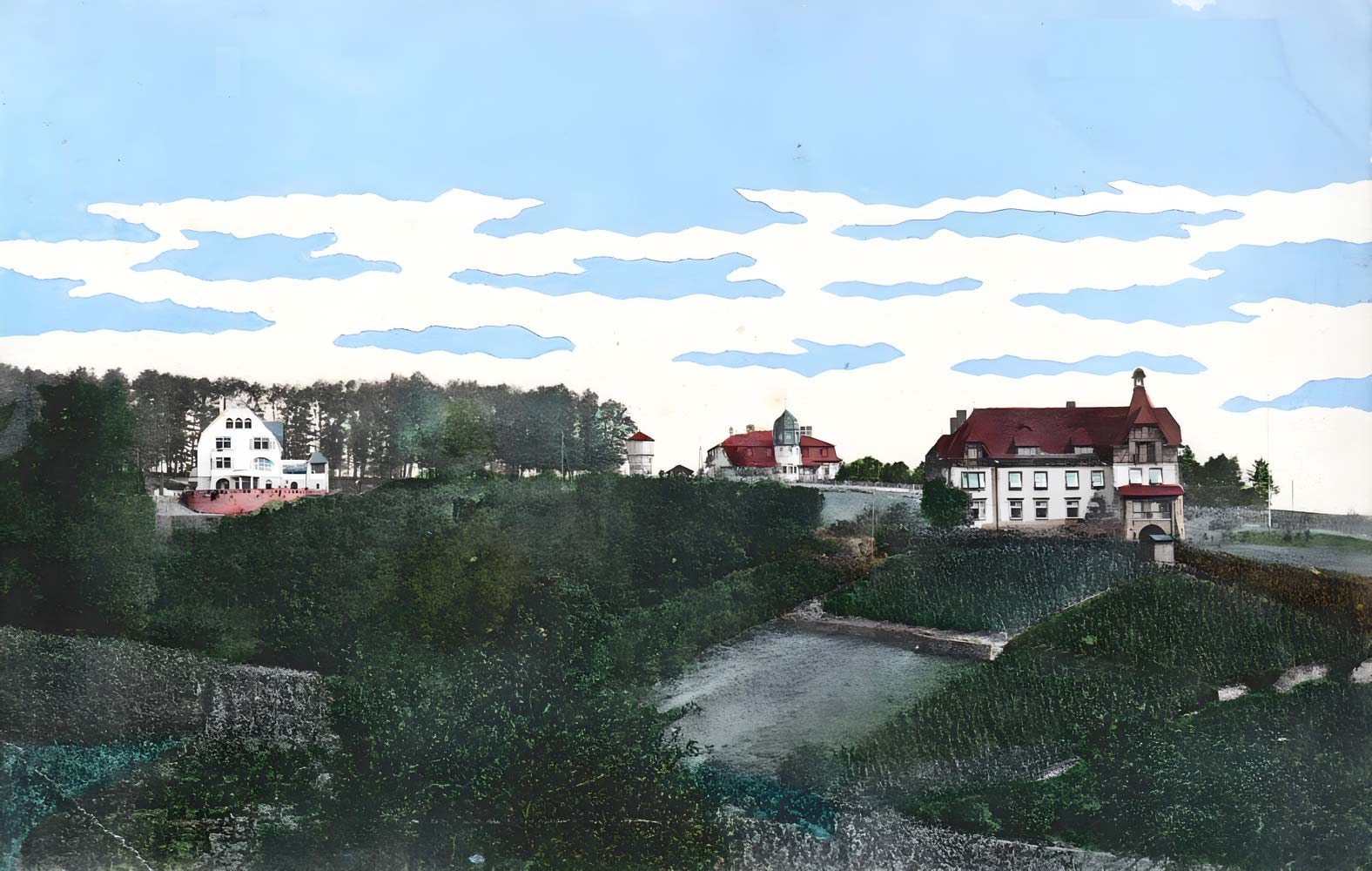St. Peter’s Catholic Church
“Sister church” Weyhers/Rhön
The first plans for St. Peter’s in Kirchheimbolanden were drawn up by August von Voit (1810-70) in 1838. He had already built the synagogue [Standort 35] here in 1834-38. His plans for St. Peter’s envisaged a representative neo-Romanesque church building with a tower façade, but this could not be realized for cost reasons. A reduced second design also proved to be too expensive.
This meant that Voit was not used in Kirchheimbolanden, but a plan from the administrative district of Lower Franconia (for Weyhers in the Rhön), which was available in Munich, was realized once again. St. Peter’s now has a “sister church”.
Symbols of the Christian
The pictorial decoration of St. Peter’s Catholic Church spans an arc from around 1500 to the 20th century:
● The late Gothic crescent moon Madonna (artistically similar to Our Lady of Eltville in St. Peter and Paul) in the Marian altar on the left in front of the choir is highlighted in the inventory of artistic monuments.
● The statue on the right side altar depicts St. Joseph (1905).
● The Schraudolph paintings above both altars depict the apostles and St. Peter. (Johann Schraudolph (1808-1879) is best known for his cathedral paintings in Speyer).
● The high altar presents wood carved scenes of the Passion and is crowned by a crucifixion group.
● The vaulted chancel ceiling thematizes the Sermon on the Mount (1905).
● In the nave, St. Peter and St. Paul have their places in the middle of the side walls.
● King David (with the harp) and St. Cecilia are depicted under the gallery balustrade.
● The baptismal font and statues of St. Anthony (signed 1930) and St. Elizabeth are located in the side rooms of the vestibule.
St. Peter’s Catholic Church thus unites a broad symbolic spectrum of Christianity in its neo-Romanesque church interior. While Elizabeth, for example, embodies active compassion, the Sermon on the Mount and the Passion, as well as Mary, Joseph and Paul in general, represent the message of the New Testament.
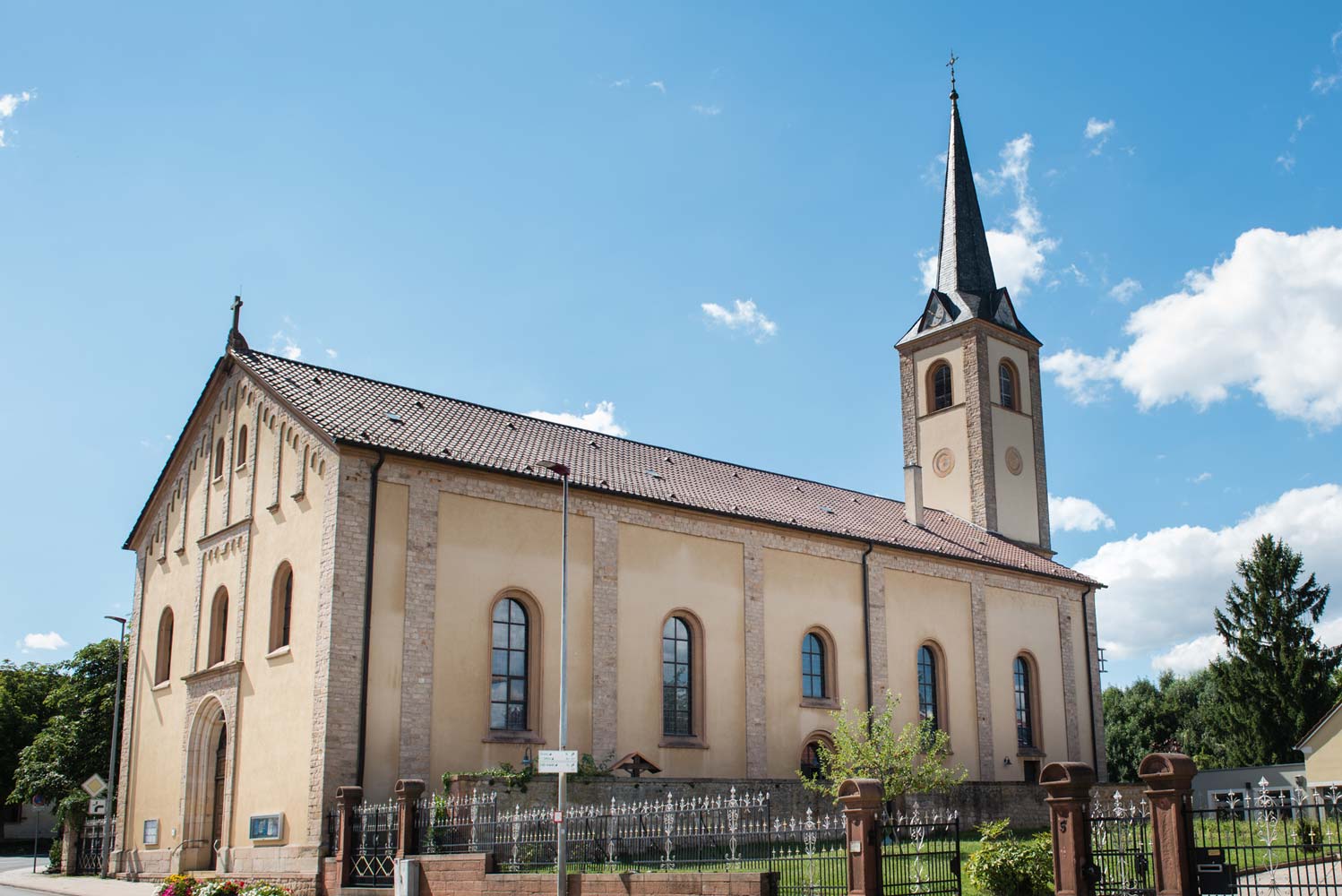
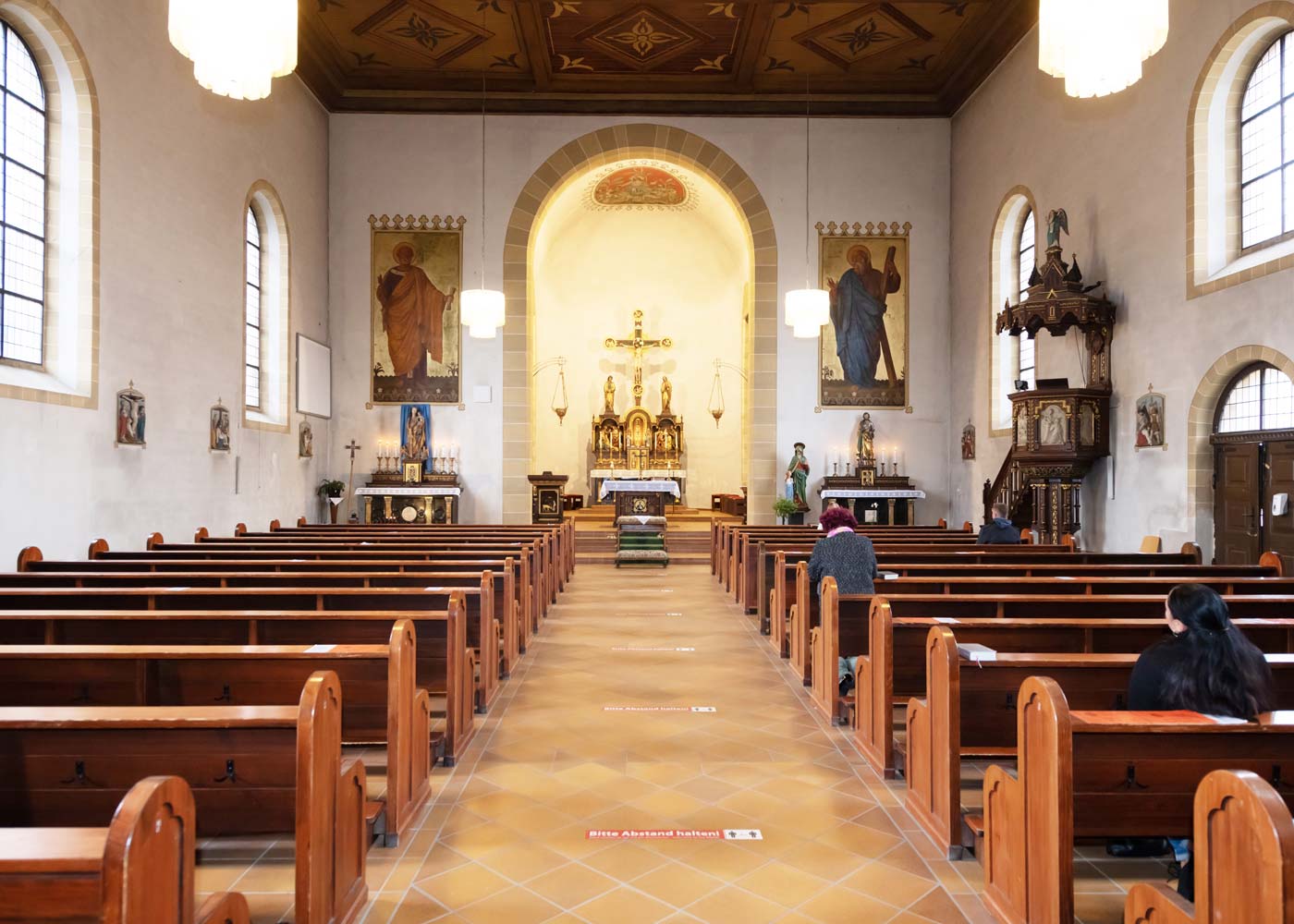
Imperial citizens’ park
In the early 19th century, today’s Schiller Grove was a barren hill in the west of the city. But then, on the occasion of Friedrich Schiller’s 100th birthday in 1859, the idea arose to erect a Schiller monument here.
However, this was not realized until 1896 – now also in the spirit of imperial self-representation. The Schiller monument was therefore supplemented by a memorial to Kaiser Wilhelm I.
Both monuments were busts that could be obtained as “mass-produced goods” from the Galvanoplastische Kunstanstalt in Geislingen, which belonged to the Württembergische Metallwarenfabrik (WMF): Schiller, 105 cm high and Kaiser Wilhelm I, 110 cm high. A picture postcard from the imperial era “passes on” both monuments.
Like Koblenz in 1897 – albeit “oversized” at the “Deutsches Eck” – Kirchheimbolanden also had “its” Kaiser Wilhelm memorial. Just think: the same Wilhelm who had commanded the Prussian troops against the irregulars at the battle in Kirchheimbolanden on June 14, 1849 [Standort 48], now received his memorial on the “Schillerhain”. Of course, a much more powerful monument to the irregulars had already been erected in the town’s cemetery in 1872 with the “Mourning Germania” [Standort 49].
But here at the Schillerhain, the focus was on a completely different kind of meaning.
It is therefore not surprising that both Schillerhain monuments were destroyed during the occupation after the First World War.
A renewal was only considered after the Second World War – but now only with a new Schiller monument. The 3 m high figure, created by sculptor Richard Menges from Kaiserslautern, was inaugurated in 1951 – as a mission to regain the human. Accordingly, the speech emphasized that what we people today should learn from Schiller’s works is to be open to the world in the truest sense of the word. Instead, we have ended up in two world wars, which could have been avoided if people had carried his quotes less on their lips and more in their hearts.
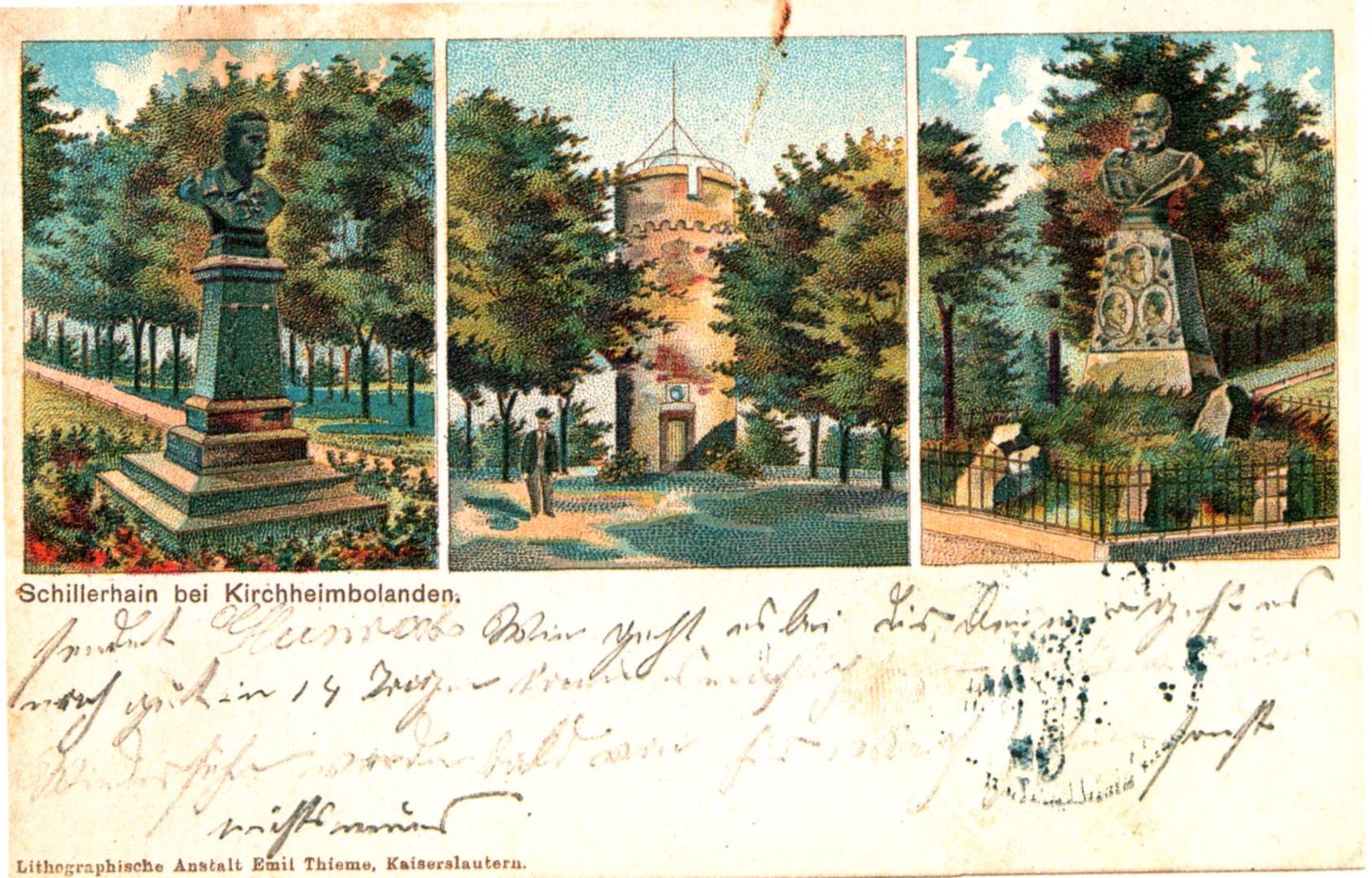
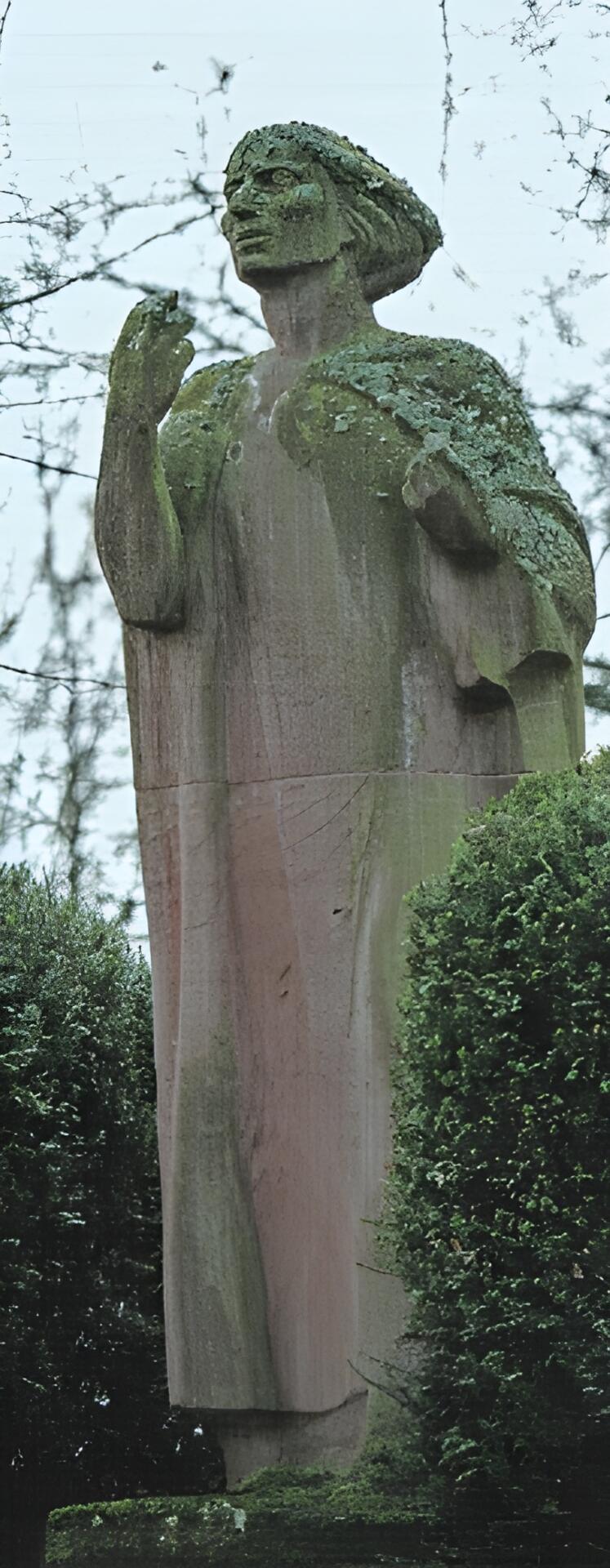
“Kirchheimbolanden climatic health resort”
With the Bürgerpark on the Schillerhain, a surprisingly beautiful park [entstanden], which is rarely found in a small town, the idea of a “climatic health resort Kirchheimbolanden” quickly followed.
The city council therefore decided to “build a spa hotel on the heights of the Schiller Grove. It was built in the modern villa style and opened in 1904.”
The “Guide to the Palatinate climatic health resort of Kirchheimbolanden”, which was published the following year, therefore gave due prominence to the Kurhaus:
It is, of course, equipped with everything that belongs to a spa hotel, the food is plentiful and cheap and the tenant of the establishment […] does everything possible to make the spa guests’ stay as pleasant as possible. […] The elegant rooms with brand new furniture cost 1 to 2 ½ marks, depending on location and size, and meals cost 3 ½ marks per day, with coffee with butter and honey in the morning, a full dinner with coffee at lunchtime and a sumptuous supper in the evening.
The Schillerhain offers a spa-like environment for this:
The large Donnersberg forest begins directly behind the Kurhaus and stretches for hours, with good, dry paths, many benches, precise markings and excellent ozone-rich air. There is also a tennis court and plenty of guests from Kirchheim and Alzey come up here. The Kurhaus tenant is happy to answer all inquiries and is prepared to arrange for those who wish to do so to be collected by car from the station.
And there is also plenty more to see and do: the “music pavilion” regularly hosts music bands and concerts.
However, the First World War and the subsequent threat to democracy soon brought Kirchheimboland’s spa activities to a standstill.
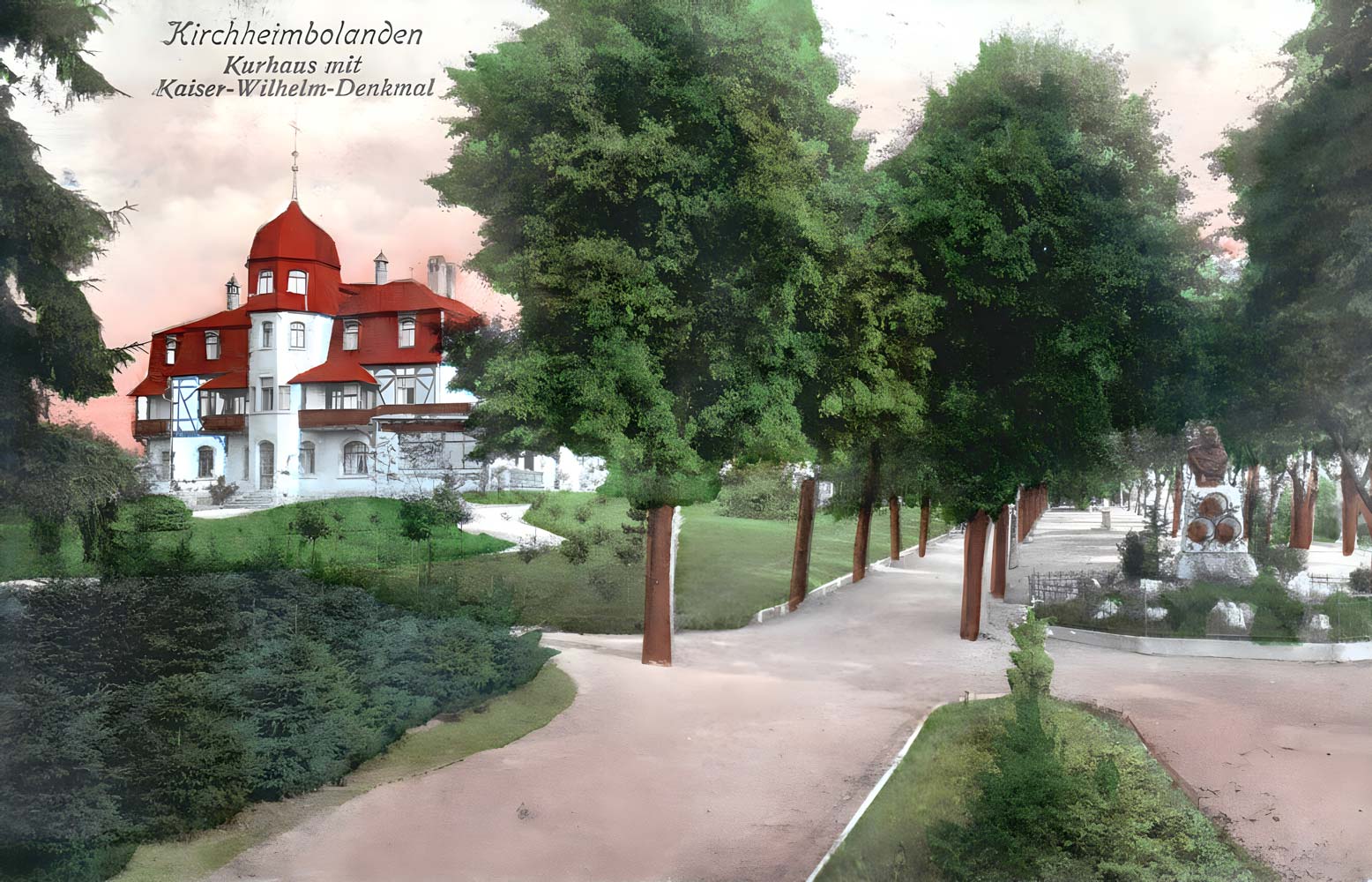
“Villa Michel”
The spa facilities at Schillerhain were not limited to the Kurhaus alone. Almost at the same time, BASF Ludwigshafen had a convalescent home built for its employees. The imposing building, built in the mixed imperial style, now belongs to the Schillerhain curative education center under the auspices of the Palatinate State Church as the “Wichernhaus”.
The “Villa Michel”, the country residence of BASF board member Dr. Oskar Michel and his wife Luise, the daughter of Dr. Carl Glaser [Standort 15] and granddaughter of the Kirchheimboland democracy advocate Dr. Friedrich Glaser [Standort 53], is also part of the curative education centre. The Schillerhain was thus a district in its own right in the late Wilhelmine imperial era. A photo from that time shows, from left to right: the “Villa Michel”, the Kurhaus and the BASF recreation home.
Oskar and Luise Michel remain associated in Kirchheimbolanden not only with the “Villa Michel”, but also with their estate in Dannenfelser Straße, today’s Rehabilitation Center am Donnersberg (Dannenfelser Straße 42), as well as a donation to the town of Kirchheimbolanden for the construction of 29 residential houses (Dr.-Oskar-Michel-Straße and Luise-Michel Straße) on what was then the southern edge of the town.
In 1950, the town of Kirchheimbolanden honored Luise Michel’s (1880-1969) diverse social commitment by making her an honorary citizen – also in memory of Oskar Michel (1868-1935), a member of the town council (1929-1933).
